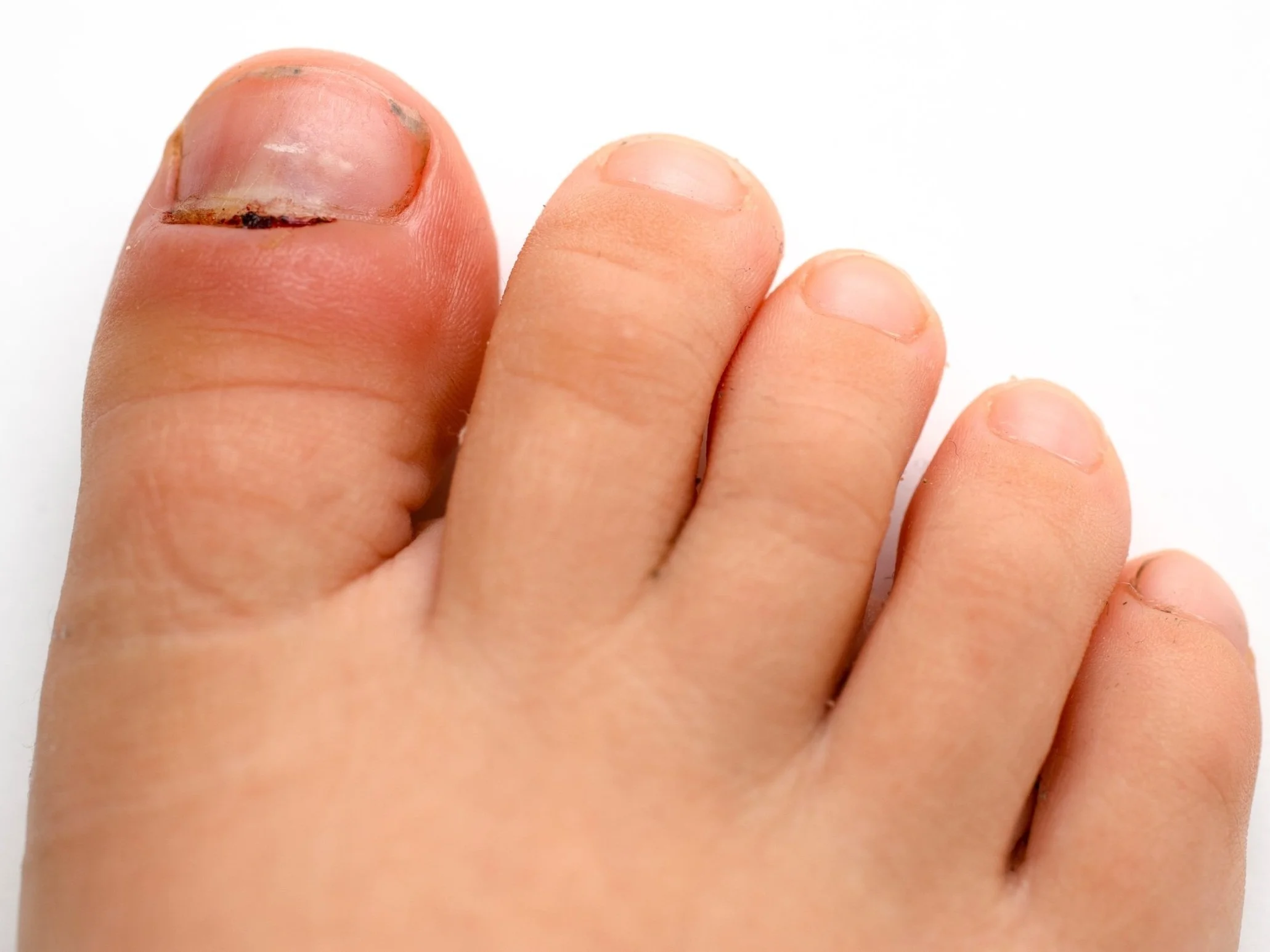Common Causes of Nail Pain
Have you ever had a toenail ruin your day? It’s incredible how something so small can cause so much pain! One wrong step, one shoe too tight, and suddenly, your toe is throbbing with discomfort. But why do toenails sometimes feel like they’re out to get us?
Let’s explore the most common causes of toenail pain and what you can do to stop it in its tracks.
Nail Anatomy: A Quick Overview
Toenails might seem like simple plates at the end of your toe, but they’re actually more complex than they look. They’re made from keratin, a tough protein that protects the tips of your toes and the underlying nail bed.
Usually, toenails are about 1mm thick with a slight curve. Still, everyone’s toenails have unique shapes, thicknesses, and even colour variations based on genetics and skin tone.
The matrix, the powerhouse responsible for new nail growth, is at the base of the toenail. This is where fresh keratin cells are produced, pushing the nail plate forward as it grows.
But toenails don’t grow quickly—only about 1.62mm per month. If you’ve ever lost a toenail due to trauma, you know it can take up to a year for a new one to fully grow back.
As we age, toenail growth slows down, and they tend to thicken.
Ingrown Toenails: The Usual Suspect
Ingrown toenails occur when the edge of your nail starts growing into the surrounding skin, leading to redness, swelling, and often infection. Ingrown toenails are incredibly painful, especially when wearing shoes.
Why does it happen? Cutting your nails incorrectly (cutting down the edges instead of cutting straight across), picking or tearing at your nails, wearing tight shoes, or just plain genetics can contribute.
What can you do? Ingrown toenails are best solved by a professional. If they are red, painful, and possibly infected, you will need a podiatrist to manage them.
Involuted Toenails: The Hidden Curve
Image Credit: Consultant 360
Sometimes, nails don’t grow straight out but instead are curved (like a horseshoe), pressing into the side of the toe. Involuted toenails can cause incredible discomfort, redness, and pressure pain.
Why does it happen? Genetics or prolonged pressure from footwear.
What can you do? Keeping nails trimmed straight across and avoiding tight shoes can help. For persistent pain, treatments like the Onyfix® Nail Correction System can gently guide the nail back into a more natural shape without surgery. Your podiatrist can advise you on this.
Fungal Toenails: The Sneaky Intruder
Fungal infections don’t always cause pain, but when they do, the nail becomes thickened and brittle or lifts off the nail bed, which can create pressure on the nail and the surrounding skin.
Why does it happen? Fungi love dark, warm, and damp environments (so shoes are the perfect haven for a fungus infection).
What can you do? Treatments include oral antifungal medications, topical nail treatments, and laser therapy. Your podiatrist can guide you through the best options for you.
4. Thickened Toenails: When Nails Fight Back
As we age, our nails can become thicker, more brittle, and sometimes painful due to conditions like onychogryphosis (yep, that’s a real word!).
Why does it happen? Age, repeated trauma, fungal infections, or underlying health conditions.
What can you do? Regular nail care with a podiatrist can make a world of difference. We trim and thin thickened nails to relieve pressure and pain.
Subungual Haematoma: The Bruised Nail
A subungual haematoma occurs when blood collects under the nail due to trauma, creating a dark, painful bruise beneath the nail.
Why does it happen? Dropping something heavy on your toe, stubbing it, or repetitive pressure from tight shoes.
What can you do? Subungal haematomas grow out over time. If the pressure is severe, a podiatrist can drain the blood to relieve pain.
Paronychia: The Infected Nail Fold
Paronychia is an infection of the skin at the base of the nail, causing pain, redness, swelling, and sometimes pus.
Why does it happen? Bacteria can enter the skin through broken skin, cuts, or trauma (e.g., accidents, or pedicures). Irritation from water, chemicals, or some medications can also cause paronychia.
What can you do? Once again, this issue should be assessed by a professional. Often, appropriate dressings and antibiotics are needed.
Nail Lifting (Onycholysis): When Nails Detach
Onycholysis occurs when the nail separates from the nail bed, leading to a white or yellowish appearance.
Why does it happen? Fungal infections, trauma, psoriasis, or repeated exposure to chemicals.
What can you do? Avoid further trauma and keep the area clean. A podiatrist can help address underlying causes.
Nail Shedding (Onychoptosis & Onychomadesis)
These conditions involve the nail completely falling off, either gradually or suddenly.
Why does it happen? Trauma, severe illness, chemotherapy, or nail infections.
What can you do? See your podiatrist for expert advice on protecting the nail bed and ensuring healthy regrowth of your new nail.
Lines and Marks on Nails: What Are They Telling You?
Nails can develop ridges, white spots, or dark streaks that indicate underlying issues.
Why does it happen? Nutrient deficiencies, injury, illness, or sometimes more serious conditions like melanoma.
What can you do? If marks are persistent or unusual, a podiatrist or doctor can assess them for underlying concerns.
A Final Note …
Toenail pain is common, but that doesn’t mean you have to suffer through it. The sooner you get the right treatment, the sooner you can get back to comfortable, pain-free feet. At Blackwood Podiatry, we’re here to keep your feet (and your toenails) happy and healthy—book an appointment today!















